9 phones we're excited to see in 2020
All the handsets set to wow us next year

The end of one year of phones means looking forward to the next, and we’ve got a list of which handsets we’re most excited to see in 2020.
Yes, the iPhone 12 is on it, as are Samsung’s flagship Galaxy S11 and Galaxy Note 11, but a refreshing number are innovative foldable phones, which are coming in at a faster and faster rate.
For example, there's the Motorola Razr - when folded up, its footprint is half that of a typical smartphone - and this is the kind of experimentation we’re excited for as the phones industry breaks from its black rectangle norm into new form factors.
Most of the phones are still the 6-inch-plus glass screens you know and love, but with particular upgrades we’re looking forward to exploring - better cameras, 5G, and more.
The devices included are all mostly rumored gadgets for now and could be unveiled at CES 2020, MWC 2020 or even right at the end of next year. They may not even be unveiled at all, as they're all just speculation for now. Without further ado, here’s the list of phones we’re looking forward to in 2020.
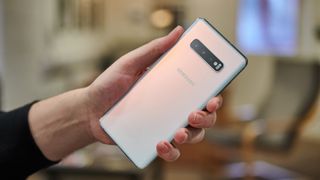
Samsung Galaxy S11 series
Samsung bookends the year with its flagship phone releases. The first big phone of 2020 will be the Samsung Galaxy S11, which should see upgrades on its cameras, specs, and so on - but the most exciting thing is how Samsung frames what’s coming in the year’s phones.
For instance, the Samsung Galaxy S10 series came out in March 2019 and introduced a triple-rear-camera suite, reverse wireless charging, and better night photography to the masses. Sure, the LG V40 beat it to the camera punch, and the Huawei Mate 20 Pro debuted this concept in a premium kit first, but the S10 brought both to a wider market especially in the US where it was available through every carrier.
Get daily insight, inspiration and deals in your inbox
Get the hottest deals available in your inbox plus news, reviews, opinion, analysis and more from the TechRadar team.
This year, we’re expecting a new set of features that will set the stage of 2020 phones, like wider-spread 5G capability (standard on every Snapdragon 865 chipset) and enormous megapixel cameras - up to 108MP, if one rumor is to be believed. And maybe, if we’re lucky, the series will keep the 3.5mm headphone jack.
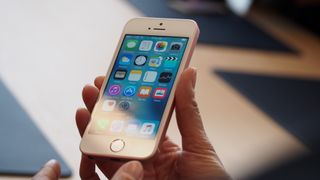
iPhone SE 2
We keep seeing reports that the iPhone SE 2, a sequel to the unquestioned king of small-size smartphones, may arrive in the first quarter of 2020 - and we couldn’t be more excited. There’s been great demand for an updated affordable option from Apple, as they’ve been pushing the iPhone 8 as their ‘budget’ model since 2017.
A new cheap iOS option would obviously be a great competitor to the Google Pixel 3a (and its assumed successor), especially if it packs the iPhone 11’s advanced photo chops. Best of all, if it keeps its form factor, the iPhone SE 2 could be a perfect handset for small-handed folks - or those who just prefer a tiny phone.
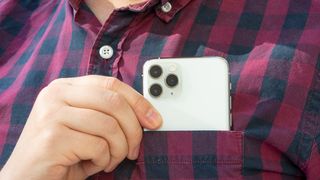
iPhone 12 series
Given that the iPhone 11 line barely changed from its predecessor, we’re hoping this year’s iPhone 12 handsets more aggressively change the beloved iPhone design. Especially if it moves away from the awkward Norelco-style triple-blob camera block on the phone’s rear.
There are other advancements Apple could implement, like reverse wireless charging, 5G, or for Pete’s sake, expandable storage.
We could finally see the end of the notch if Apple figures out how to do under-display front-facing cameras. But most importantly, we’ll see whether Apple continues to design conservatively, making small refinements to the previous year’s design while waiting for other phonemakers to warm up the public with new concepts.
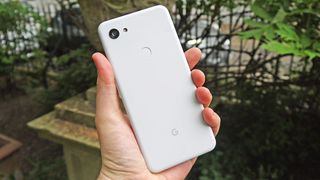
Google Pixel 4a
While we keep putting the Google Pixel phones in our best phones list, it wasn't the line's 2019 flagship that blew us away - it was the Google Pixel 3a. Pack in all the amazing photography of the Pixel 3 with few drawbacks at half the price? Sign us up.
We're hoping the Google Pixel 4a will take the value train even further by including more features from the Pixel 4 flagship, like facial recognition and a second lens, while retaining all the extras people don't mind in mid-range phones, like physical fingerprint sensors and a 3.5mm headphone jack.
Or it could even leap ahead of the Google Pixel 5 by launching with a third (ultrawide) lens before its fully-featured flagship sibling arrives. The Pixel 4 was also a radically simple - dare we say fun - phone design, and we hope Google lets the Pixel 4a's freak flag fly a little bit with its external styling.
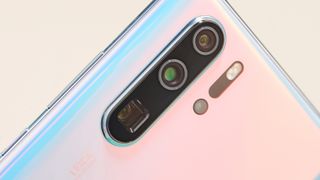
Huawei P40 Pro
The Huawei P30 Pro is an incredible and underrated photography-focused phone that introduced the idea of a periscope lens - stacking lenses along the phone’s length and using an angled mirror to peer out the back - to get an unprecedented 5x optical zoom.
We can’t wait to see what the company does with the Huawei P40 Pro.
That means more optical zoom, hopefully, but also even better night photography - which we found rivaled if not exceeded what the Google Pixel 3 (the latest at the time) was capable of.
It'll also be interesting to see how the company continues to tackle the issue of the Huawei ban with its first flagship phone since the company has been restricted in its use of Google Play Services like Gmail, YouTube and more.
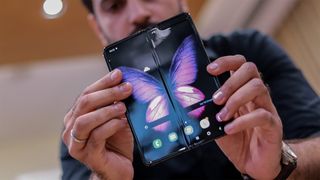
Samsung Galaxy Fold 2
After its aborted original launch, the first Galaxy Fold finally came out in late 2019 with a refined and reinforced design that, thus far, has stood up to typical wear and tear in the hands of the few reviewers and consumers who can stomach its high pricetag.
We have high hopes for the Samsung Galaxy Fold 2 and all the quirks it will hopefully iron out.
Chief among these is a more robust inner display - and one that doesn’t have a visible ridge along the hinge-line. We’d like to see the expected advances coming to other smartphones in 2020 like 5G in all models, as well as a lower weight and more powerful cameras. But most importantly: we want it to be a lot cheaper to lower the entry cost for foldables.

Motorola Razr 2020
The Motorola Razr 2019 is certainly a more affordable foldable than the Galaxy Fold, but it’s not that comparable: the former folds horizontally ‘hamburger’ style instead of into a wider tablet-size screen. It trades real estate for a device footprint half the size of a typical smartphone...and a tiny front screen good for previewing texts and taking basic photos while the phone is folded up.
We haven’t even gotten our hands on the device for longer than an afternoon, so we remain very curious how we’ll use it and whether it’s a feasible alternative to modern smartphones. But word on the street is that there’s another version coming out next year, and we’re excited to see how the Motorola Razr 2020 refines on its very cool but not industry-changing predecessor.
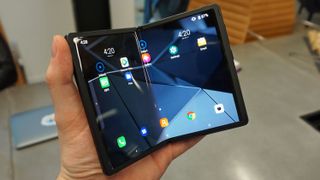
TCL foldable phone
TCL has just started releasing phones above its budget level Alcatel handsets, yet it has a foldable on the way. It’s unclear when the unnamed TCL foldable phone will come out nor what it will look like - the concept looks a bit like a stumpy tablet that’s more wide than the tall, thin Galaxy Fold - but it’s promising for one simple reason: a low price.
Yes, the TCL foldable phone could be the cheap bendy phone for the masses. Judging by the concept device seen in October 2019, TCL’s foldable isn’t terribly pretty with thick bezels on its ‘innie’ interior display, but it is technically a foldable that seems to work, which is more than enough for us to look forward to the final device.

OnePlus Mystery Device
OnePlus is unveiling a mystery device in January 2020 - an “alternate vision for the future of smartphones” as the company said in a tweet - that it’s named the OnePlus Concept One. Is it a foldable? A cheap 5G device? Something completely overhyped?
It doesn’t matter - unlike a lot of other phones on this list, it allows us to live in a brief moment where a phonemaker is trying something different and we don’t have a clue what it is. This is the excitement that buzzed in the years before the first few iPhones calcified what we’ve come to accept as the singular design everyone’s settled on (rectangle, seamless glass front, cameras front and rear, buttons on sides).
Phones used to be dramatically different from each other, they used to be weird, and in this moment, OnePlus has our rapt attention for what wild new directions phones could take in 2020. Plus it'll likely have the new OnePlus 8 series to show us next year, which unlike this concept device will actually be available for purchase in the next 12 months.
David is now a mobile reporter at Cnet. Formerly Mobile Editor, US for TechRadar, he covered phones, tablets, and wearables. He still thinks the iPhone 4 is the best-looking smartphone ever made. He's most interested in technology, gaming and culture – and where they overlap and change our lives. His current beat explores how our on-the-go existence is affected by new gadgets, carrier coverage expansions, and corporate strategy shifts.
Most Popular



